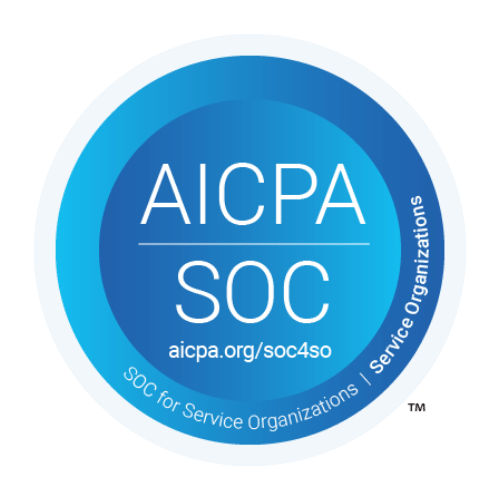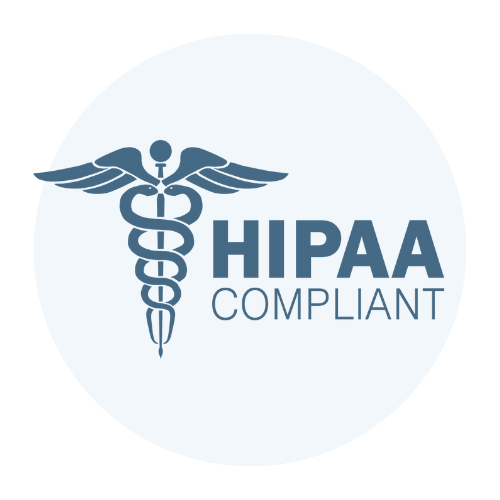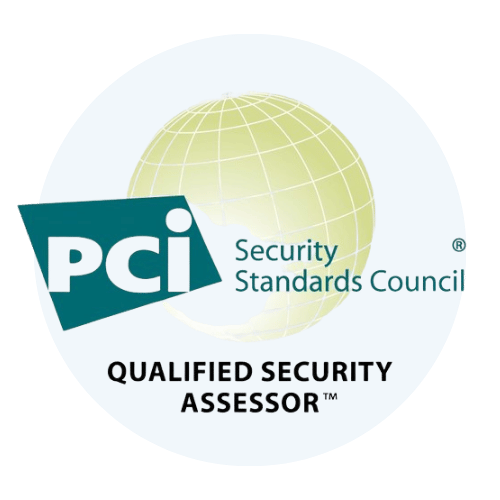10 Questions to Ask Before Starting Your PCI DSS Journey
Achieving PCI DSS compliance is essential for safeguarding cardholder data, meeting industry standards, and minimizing risks. Being prepared is necessary whether you are embarking on your first assessment or refining your approach. This guide outlines 10 key questions to ask before starting your PCI DSS compliance journey. What is our current PCI DSS compliance level? What is the scope of our cardholder data environment? Do we have a dedicated team for PCI DSS compliance? What is our current security posture? What documentation do we need to prepare? How will we manage third-party service providers? What is our timeline for achieving compliance? How will we handle incident response and breach notification? What technologies do we need to implement or upgrade? How will we maintain compliance long-term? Each one offers insights to help you build a robust compliance strategy and leverage TrustNet’s Accelerator+ approach for streamlined PCI compliance success. [/et_pb_text][et_pb_text quote_border_weight=”3px” quote_border_color=”gcid-c6a045ad-93f2-41aa-bea3-317846c80b16″ module_id=”1″ _builder_version=”4.27.4″ _module_preset=”default” text_font=”Hero New Regular|300|||||||” text_text_color=”gcid-f90447ab-4baa-4389-a89e-9e109c0034c2″ text_font_size=”16px” text_line_height=”1.9em” ul_line_height=”1.6em” quote_line_height=”2em” header_font=”Hero New Regular|700|||||||” header_2_font=”Hero New Regular|600|||||||” header_2_line_height=”1.7em” header_4_font=”Hero New Regular|600|||||||” header_4_line_height=”1.6em” custom_margin=”2em||||false|false” global_colors_info=”{%22gcid-f90447ab-4baa-4389-a89e-9e109c0034c2%22:%91%22text_text_color%22%93,%22gcid-c6a045ad-93f2-41aa-bea3-317846c80b16%22:%91%22quote_border_color%22%93}”] 1. What is our current PCI DSS compliance level? Understanding your PCI DSS compliance level is crucial for defining your organization’s compliance roadmap. At TrustNet, we specialize in assessing your current status and helping you align with the right requirements. Your annual transaction volumes determine compliance levels: Level 1: Over 6M transactions/year Level 2: 1–6M transactions/year Level 3: 20K–1M transactions/year Level 4: Fewer than 20K transactions/year For service providers, the levels are based on cardholder data interactions: Service Provider Level 1: Over 300K transactions/year Service Provider Level 2: Fewer than 300K transactions/year TrustNet’s PCI Accelerator+ Program guides this classification through a structured approach. We identify your transaction volume, determine your compliance level, and clarify the specific requirements applicable to your organization. 2. What is the scope of our cardholder data environment (CDE)? Your cardholder data environment (CDE) includes all systems that store, process, or transmit cardholder data, making it essential to accurately identify and document these components. Mapping data flows within your organization helps uncover how cardholder data moves and where potential vulnerabilities might exist. At TrustNet, we specialize in conducting comprehensive scoping exercises to streamline compliance efforts. Our approach includes: Identifying all systems that store, process, or transmit cardholder data Mapping data flows to provide a clear understanding of your data’s movement Offering network segmentation solutions to reduce scope and enhance security By narrowing your CDE scope wherever possible, we help you focus on the most critical areas, reducing the complexity and cost of compliance while improving overall data protection. 3. Do we have a dedicated team for PCI DSS compliance? Clear roles and responsibilities ensure that your PCI DSS compliance efforts are organized, effective, and aligned with your business objectives. Start by identifying key stakeholders across departments who will take ownership of specific tasks within the process. TrustNet helps organizations assess their current team structure and provides guidance to fill any gaps. We can recommend critical roles, define responsibilities, and offer expert support where needed. Our Qualified Security Assessors (QSAs) can supplement your internal resources, bringing expertise to complex compliance requirements. Key actions include: Assigning roles and responsibilities for compliance tasks Identifying stakeholders who oversee compliance efforts Engaging external expertise, such as TrustNet’s PCI DSS Assessors With a skilled and focused team, you can streamline the compliance process, tackle challenges confidently, and effectively maintain adherence to PCI DSS standards. 4. What is our current security posture? Assessing your current security posture involves evaluating your existing security controls, identifying vulnerabilities, and understanding where improvements are needed. This clarity ensures your organization is well-prepared to meet compliance requirements and minimize risks. TrustNet’s PCI DSS Accelerator+ approach simplifies this process through a comprehensive gap analysis. Our team identifies gaps in compliance, evaluates your current security measures, and pinpoints vulnerabilities in your systems. Key steps include: Conducting a thorough gap analysis to highlight areas of improvement Identifying and documenting existing security controls Assessing vulnerabilities to prioritize remediation efforts effectively The PCI DSS Accelerator+ provides real-time project updates and clear recommendations, helping you focus resources on critical areas. 5. What documentation do we need to prepare? To start, you will need to create an inventory of essential documents such as policies and procedures, network diagrams, data flow charts, and system configuration standards. TrustNet simplifies this process by helping you organize and review all necessary documentation to ensure it aligns with PCI DSS requirements. Key steps include: Creating an inventory of all required policies and procedures Gathering detailed network diagrams and data flow charts Compiling system configuration standards for your environment By preparing up-to-date, comprehensive documentation, we streamline compliance efforts and enhance your organization’s ability to respond to assessments and security incidents effectively. 6. How will we manage third-party service providers? To protect your compliance framework, every vendor with access to sensitive information must meet PCI DSS requirements. First, identify all third-party vendors handling cardholder data. Next, review their contracts to ensure they include PCI DSS compliance clauses. Finally, you should establish robust monitoring processes to track ongoing vendor adherence to security standards. TrustNet simplifies this complex process with expert support, helping you: Pinpoint all vendors with cardholder data access Review and update service agreements to meet PCI DSS directives Set up comprehensive monitoring programs for sustained compliance Managing third-party relationships proactively helps reduce risk and strengthen security across your supply chain. 7. What is our timeline for achieving compliance? Establishing a clear and structured timeline is critical for achieving PCI DSS compliance efficiently and effectively. TrustNet’s PCI DSS Accelerator+ program provides a streamlined approach, breaking the process into distinct phases to ensure steady progress without overwhelming your team. Here’s an overview of the timeline and phases: Advisory (2-4 weeks): Define the scope, assess readiness, and address remediation needs. Automation (2-4 weeks): Set up necessary configurations, train your teams, and deploy solutions tailored to your environment. Assessment (2-4 weeks): Conduct thorough planning, testing, and delivery to ensure precision in meeting compliance objectives. Managed (Year-Round): Ongoing support includes collecting data,
PCI DSS Compliance: What It Is and Why Top Companies Can’t Afford to Ignore It

For organizations that handle payment card data, compliance is not just a regulatory checkbox; it is a critical part of the business to protect itself from financial loss, reputational damage, and operational disruptions. CISOs and other compliance decision-makers must strengthen all processes involved in ensuring the business is PCI DSS compliant rather than hinder business efficiency. Here’s why PCI DSS compliance matters to your organization: Safeguards sensitive cardholder data for secure payment processing. Mitigates risks of costly breaches and loss of customer trust. Builds a strong foundation of payment security standards. Achieving and maintaining PCI DSS compliance can be overwhelming. Audit fatigue, complex vendor relationships, and ever-changing requirements make it feel like a moving target. But when done right, compliance becomes a competitive advantage, protecting customers, minimizing risk, and streamlining operations. This article explains PCI DSS compliance and why it matters to your business. You will also learn the key requirements you must meet and how staying compliant helps protect your business and your customers, avoid unnecessary costs, and unlock new revenue opportunities over time. What is PCI DSS Compliance? PCI DSS compliance means meeting the standards outlined in the Payment Card Industry Data Security Standard (PCI DSS). This global framework is designed to protect sensitive cardholder data by enforcing rigorous security measures across its storage, processing, and transmission. PCI DSS compliance serves as a lifeline for businesses looking to safeguard payment data and eliminate vulnerabilities. The PCI Security Standards Council (PCI SSC), established in 2006 by major credit card brands like Visa and Mastercard, governs these standards. Its goal is to set uniform payment industry standards that reduce fraud, data breaches, and cyber threats targeting payment card systems. Here’s who PCI DSS applies to: — Merchants Any business that accepts, processes, stores, or transmits payment card data, regardless of size or transaction volume. This includes small e-commerce stores, mid-sized businesses, and large retailers. — Service Providers Companies that process, store, or transmit payment card data on behalf of merchants, such as payment processors, cloud service providers, managed security providers, and hosting companies. — Financial Institutions Banks, credit card issuers, acquirers, and other entities involved in payment processing. — Other Entities Businesses that develop software, manufacture hardware, or provide security solutions that interact with cardholder data or payment transactions, such as point-of-sale (POS) system providers or encryption service providers. Merchants processing credit cards are categorized into categories that depend on the volume of the cards they process: Level 1 merchants process over 6 million Visa transactions annually across all channels; Level 2 merchants process between 1 and 6 million transactions across all channels; Level 3 merchants process 20,000 to 1 million e-commerce transactions annually. PCI level 3 certification is still necessary even for these smaller merchants. Level 4 merchants process fewer than 20,000 transactions or do not fall into the other level categories for other reasons. PCI certification is still necessary. Furthermore, PCI service providers also fall into different visa service provider levels according to credit card processing volume as follows: The PCI level 1 service provider processes, stores, or transmits more than 300,000 credit card transactions annually. They must file an annual Report on Compliance (ROC) with an Attestation of Compliance (AOC) from a Qualified Security Assessor (QSA). The level 2 service provider offers data storage, transmits, or processes less than 300,000 credit card transactions yearly. To obtain PCI level 2 certification, an organization must complete a Self-Assessment Questionnaire (SAQ) annually. An internal scan, penetration test, quarterly network scan, and an attestation of compliance for service providers form are also necessary. At TrustNet, we offer QSA-Assisted SAQ services, streamlining the compliance process so businesses can stay secure while focusing on growth. Our expert guidance is especially valuable for growing service providers, businesses with complex IT environments, and organizations looking to enhance security without diverting internal resources. By simplifying compliance, we help companies allocate more time and energy to scaling their operations. Overall, PCI DSS compliance helps shield your business against threats, achieve payment data protection, and maintain customer trust. It’s more than a security measure; it’s a responsibility. Explore PCI DSS Compliance Solutions with TrustNet Learn More Why Your Organization Needs PCI DSS Compliance Amid any business growth, your customers entrust you with something invaluable – their payment data. Protecting it isn’t just about meeting expectations; it’s about safeguarding your reputation, ensuring operational stability, and building a resilient future for your business. Here’s why your business needs PCI DSS compliance: Protect customer trust: Customers expect their payment data to be safe. Compliance demonstrates your commitment to protecting customer data and strengthening trust with both customers and partners. Avoid breaches and liabilities: Non-compliance increases the risk of costly payment breaches, leading to heightened liability, damaged reputations, and operational setbacks. Prevent legal and financial penalties: Failure to comply with the payment card industry data security standards can result in hefty fines, lawsuits, and industry sanctions. The business benefits of PCI DSS go beyond avoiding penalties. It creates a robust framework for secure transaction processing, positioning your organization as a trusted stakeholder in the payment ecosystem. At its core, PCI DSS isn’t just about preventing breaches; it’s about showing customers and partners that their data is a top priority. Building this trust is essential for long-term growth and resilience. How Can TrustNet Help You Achieve PCI DSS Compliance The PCI DSS compliance process can be complex and overwhelming without the right tools and expertise. That’s where TrustNet’s PCI Accelerator+ comes in. By leveraging Advisory, Automation, and Assessment, we simplify and streamline the compliance process, empowering your organization to safeguard sensitive information efficiently and effectively. Here’s how PCI Accelerator+ can guide your business through the key steps to achieving PCI DSS compliance: Step 1: Conduct a PCI Readiness Assessment Start with a thorough evaluation of your current security practices. PCI Accelerator+ provides Advisory services to help you determine your organization’s compliance level based on transaction volumes and existing safeguards. This readiness assessment identifies gaps in your practices, ensuring you know which areas
Common Web Application Attacks
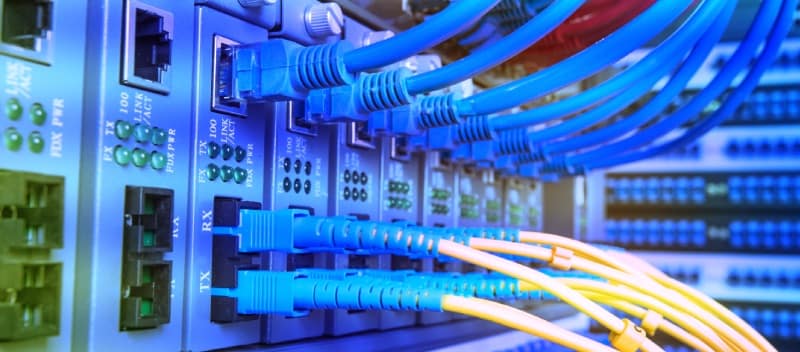
How GhostWatch Streamlines SOC 2 Compliance
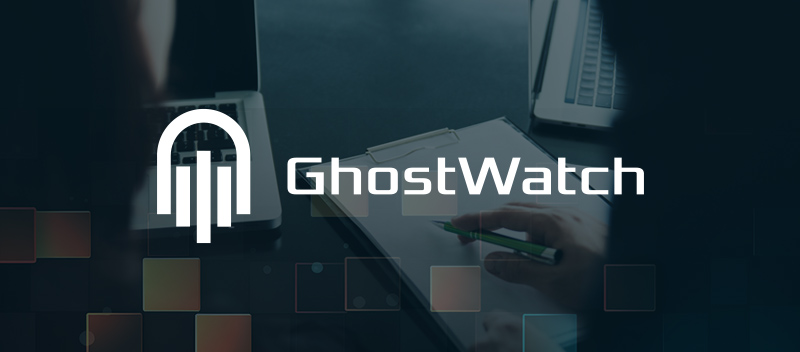
SOC 2 compliance has become a gold standard, showing customers and stakeholders that your organization values security and accountability. However, for many businesses, the road to achieving and maintaining SOC 2 compliance is anything but straightforward: Lengthy, resource-intensive audits that pull teams away from core tasks. Complex documentation requirements that can feel overwhelming. Evolving regulations that make staying compliant an ongoing struggle. These obstacles can drain time, stretch budgets, and leave organizations feeling stuck. That’s where GhostWatch steps in. Purpose-built to reduce the burden of SOC 2 compliance, it uses advanced technology and customized strategies to simplify the entire process. GhostWatch delivers solutions that work smarter, not harder, such as: 24/7 Monitoring: Keeps your systems secure by identifying and addressing vulnerabilities in real-time. Automated Evidence Collection: Cuts down tedious manual tasks, making audit preparation faster and easier. Real-Time Compliance Reporting: Provides actionable insights to ensure your team is always one step ahead. The rest of this article will explore the main challenges of SOC 2 compliance and show how GhostWatch transforms those hurdles into manageable, efficient workflows. Whether you’re gearing up for your first audit or maintaining ongoing compliance, GhostWatch is your partner in achieving security and success. The Pain Points of SOC 2 Compliance For many organizations, the SOC 2 compliance process is complex, time-consuming, and draining — impacting their ability to focus on core operations. The most common challenges of SOC 2 compliance include: Documentation Overload: Gathering and organizing the extensive records required for SOC 2 audits can overwhelm teams. From tracking system access logs to compiling policy updates, the sheer amount of paperwork is daunting. Resource-Heavy Audits: SOC 2 audits demand expert knowledge, time, and coordination across departments. Smaller teams often struggle to handle these responsibilities without stretching resources thin. Post-Certification Maintenance: Achieving SOC 2 certification is just the beginning. Staying compliant means continuously monitoring processes, updating controls, and keeping up with changing regulations — a challenge many businesses underestimate. These pain points take a toll in several areas. Extended timelines are one major consequence, as the process can drag on for months without efficient tools or clear workflows. The cost of compliance also rises, with businesses committing more financial and human resources than anticipated. Perhaps most significantly, productivity often suffers as teams focus on satisfying audit requirements rather than driving business growth. The ripple effects don’t stop there. Missed deadlines or overlooked issues can jeopardize compliance efforts, risking audits, reputational harm, or even loss of business opportunities. SOC 2 compliance might feel like a necessary obstacle, but when approached without the right strategy, it can drain budgets and morale. Addressing these challenges requires a proactive, efficient approach — one that simplifies processes while ensuring timelines, costs, and productivity stay on track. How GhostWatch Simplifies SOC 2 Compliance SOC 2 compliance demands precision, consistency, and a proactive approach. GhostWatch simplifies these complexities with industry-leading features designed to address the most pressing challenges businesses face. — 24/7 Monitoring Security threats don’t operate on a schedule, and neither does GhostWatch. Its 24/7 monitoring ensures your systems remain secure and compliant around the clock. Vulnerabilities are identified the moment they arise, allowing your team to address them proactively. Real-time alerts notify you of potential risks, preventing compliance gaps before they develop. Continuous monitoring offers peace of mind, knowing no detail is overlooked, even during off-hours. By maintaining this constant oversight, GhostWatch minimizes risk and eliminates the uncertainty that comes with manual monitoring efforts. — Automated Evidence Collection Preparing for an audit typically means collecting mountains of documentation — a task that can quickly become overwhelming. GhostWatch transforms this process with automated evidence collection, making audit preparation faster and easier. System-generated logs and policy updates are automatically captured and organized. Manual tasks, like pulling reports or tracking changes, are reduced, saving your team countless hours. Auditors receive clear, accurate records, eliminating back-and-forth questions or missing evidence. This automation not only streamlines your compliance efforts but frees up your team to focus on higher-value tasks. — Custom Compliance Frameworks Every business has unique processes, risks, and goals. With custom compliance frameworks, GhostWatch adapts to your specific needs instead of forcing you to fit a one-size-fits-all model. Tailored frameworks simplify compliance by focusing only on what’s relevant to your organization. Controls are strategically implemented to align with your operations, avoiding unnecessary complexity. Flexibility ensures your framework can evolve alongside regulations or changes in your business. By creating a compliance strategy that works for you, GhostWatch eliminates the guesswork and makes SOC 2 standards achievable without disrupting your workflows. Learn more on how to simplify your SOC 2 Compliance Journey with our SOC Accelerator+ Program Here A Deep Dive on GhostWatch’s Automated Reporting and Proactive Security GhostWatch prides itself on combining cutting-edge proactive security features with robust compliance reporting. Offering a complete solution for SOC 2 compliance and beyond, this simultaneous focus guarantees businesses remain audit-ready and secure from any threats. Real-Time Insights and Reporting Staying on top of compliance requirements can be overwhelming without clear, actionable insights. GhostWatch simplifies this by automating the reporting process and presenting critical data through user-friendly dashboards. Real-Time Reporting: Teams receive immediate updates on compliance status, ensuring they’re always prepared for audits. Actionable Insights: Generated reports highlight areas that need attention, helping businesses quickly resolve issues before they escalate. Intuitive Dashboards: These dashboards make monitoring compliance progress highly efficient. They track progress, assign tasks to team members, and keep stakeholders aligned with current objectives. The automation removes the guesswork and reduces the time spent manually compiling data, enabling teams to focus on driving results rather than getting bogged down with logistics. Proactive Security and Remediation Beyond compliance, GhostWatch takes a proactive approach to security by monitoring for vulnerabilities and addressing them before they become liabilities. Threat Detection: The system continuously scans for potential breaches or compliance gaps, offering detailed alerts should an issue arise. Automated Solutions: GhostWatch detects issues and provides actionable recommendations for fixing them, reducing the risk of costly errors or delays. Enhanced Compliance and
SOC 2 Best Practices by TrustNet: An Expert Compliance Guide
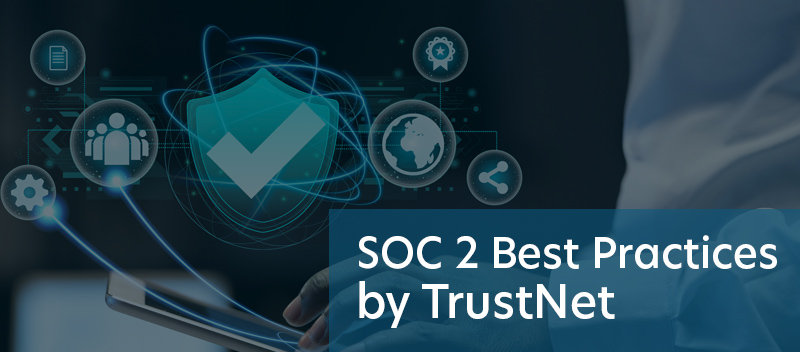
SOC 2 compliance ensures that organizations manage customer data securely. It’s a key standard in industries like SaaS, healthcare, and finance, where trust and data protection are non-negotiable. Meeting SOC 2 requirements strengthens security posture and demonstrates a genuine commitment to safeguarding sensitive information. Achieving SOC 2 compliance is important because: It lays the foundation for protecting customer data against threats. It helps businesses meet critical data security standards. It builds trust, strengthening relationships with clients and partners. Without compliance, companies risk breaches, reputational harm, and legal ramifications. This article serves as a practical guide to SOC 2 best practices. Backed by TrustNet’s expertise, we’ll share proven strategies to help your business simplify compliance efforts, prepare for audits, and maintain ongoing alignment with these data security standards. With the right approach, SOC 2 compliance becomes achievable and a valuable asset to your organization. Understanding SOC 2 Compliance Developed by the American Institute of Certified Public Accountants (AICPA), SOC 2 evaluates a company’s systems and processes based on the five Trust Services Criteria. These criteria thoroughly assess how well an organization safeguards data and ensures operational integrity. Security. Information and systems are protected against unauthorized access, unauthorized disclosure of information, and damage to systems that could compromise the availability, integrity, confidentiality, and privacy of information or systems and affect the entity’s ability to achieve its objectives. It also refers to protecting information during its collection or creation, use, processing, transmission, and storage, as well as systems that use electronic information to process, transmit, transfer, and store information to enable the entity to meet its objectives. Controls over security prevent or detect the breakdown and circumvention of segregation of duties, system failure, incorrect processing, theft or other unauthorized removal of information or system resources, misuse of software, and improper access to or use of, alteration, destruction, or disclosure of information. Availability. Information and systems are available for operation and use to meet the entity’s objectives. Processing Integrity. System processing is complete, valid, accurate, timely, and authorized to meet the entity’s objectives. Confidentiality. Information designated as confidential is protected to meet the entity’s objectives. Confidentiality addresses the entity’s ability to protect information designated as confidential from its collection or creation through its final disposition and removal from the entity’s control by management’s objectives. Privacy. Personal information is collected, used, retained, disclosed, and disposed of to meet the entity’s objectives. SOC 2 Reports as a Trust Builder An organization’s SOC 2 report comprehensively evaluates its ability to meet these five Trust Services Criteria. By completing a robust SOC 2 audit process, businesses demonstrate their commitment to security, reliability, and accountability. Why does this matter? Building Trust: A SOC 2 report reassures customers and partners that your business meets stringent data protection standards. Competitive Edge: It positions your organization as a trustworthy partner in industries where security is critical. Mitigating Risks: It helps reduce vulnerabilities that could lead to security breaches, reputational damage, or operational disruptions. SOC 2 compliance is a strategic advantage that fosters growth, trust, and long-term success in today’s highly regulated environment. Learn more about our SOC Accelerator+ Program Here Best Practices for Achieving SOC 2 Compliance Achieving SOC 2 compliance may seem challenging, but your organization can streamline the process with a strategic approach and achieve success. Here’s a practical SOC 2 compliance checklist to guide your efforts: 1. Secure Top-Down Support Success starts with leadership. Gaining buy-in from executives ensures SOC 2 compliance becomes a priority across the organization. Leadership support paves the way for allocating resources, defining priorities, and aligning company goals with compliance requirements. When the tone is set at the top, building a culture of accountability and security is easier. 2. Define the Audit Scope Start by identifying the areas of your business that will be audited. Focus on the relevant Trust Services Criteria (security, availability, processing integrity, confidentiality, and privacy) that align with your client’s expectations and industry demands. Defining the scope helps streamline your efforts and keeps the audit process efficient. This sharp focus reduces unnecessary work and ensures your energy is directed where it matters most. 3. Conduct a Readiness Assessment Before the official SOC 2 audit, a readiness assessment or gap analysis must be performed. This step evaluates your current controls and identifies any areas that need improvement. Addressing deficiencies early minimizes risks of delays, failures, or added expenses during the audit. A well-executed SOC 2 readiness assessment creates a solid foundation for success. 4. Implement Strong Security Controls Implementing effective SOC 2 controls is key. Adopt measures like access restrictions, encryption protocols, and incident monitoring. Don’t focus on compliance as a one-time effort. Continuous monitoring ensures your policies remain robust and up to date. Proactively addressing gaps strengthens your data protection framework. 5. Engage a Trusted Auditor Partnering with experienced auditors, like TrustNet, simplifies the process. Their industry knowledge ensures a smooth auditing experience, from preparation to issuing the SOC report. A credible auditor understands the nuances of your business, making the audit process more manageable and less stressful. By following these best practices, your organization will be well-positioned to achieve SOC 2 compliance with ease. Maintaining Ongoing Compliance Occasional maintenance is essential to protecting customer trust and your organization’s security posture. Continuous compliance monitoring helps ensure your controls remain effective, even as threats, technology, and business processes evolve. Here are key post-audit best practices to maintain SOC 2 compliance year-round: Perform Regular Audits Schedule periodic internal audits to review your controls and identify potential weaknesses. This proactive approach ensures you stay ahead of issues and remain audit-ready for future certifications. Leverage Compliance Automation Tools Simplify SOC 2 maintenance with tools like TrustNet’s GhostWatch Managed Compliance Services. These advanced solutions automate evidence collection, track compliance status in real-time, and provide actionable insights to address gaps quickly. Automation reduces manual effort and minimizes human error, making the compliance process smoother and more efficient. Monitor Continuously SOC 2 compliance is a continuous commitment. Regularly monitor access controls, incident logs, and data activity
2025 Cybersecurity Blueprint: Advanced Monitoring, Rapid Response, and Threat Mitigation
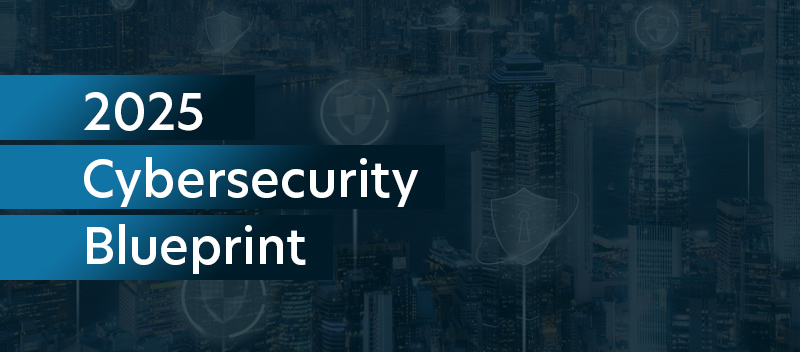
Advanced security monitoring, rapid incident response, and addressing emerging threats are key to defending against today’s dynamic landscape. However, a lot of companies still find it difficult to stay up to date with the most recent cybersecurity best practices. Proactive security monitoring lies at the heart of modern threat detection and mitigation. Continuous monitoring enables real-time identification of suspicious activities, allowing businesses to act before vulnerabilities are exploited. Equally vital is implementing an efficient incident response plan. 2025 also brings emerging threats, from AI-powered cyber-attacks that automate phishing and hacking to deepfake fraud schemes and ransomware’s evolving data extortion methods. The ability to address these developments hinges on staying informed and resilient. This article explores critical topics to enhance your organization’s defenses, including: Security monitoring essentials and tools Steps to craft an effective incident response plan Key threats in 2025, such as AI-driven attacks and IoT exploits Leveraging threat intelligence and automation to stay ahead By the end, you’ll gain actionable insights to fortify resilience and future-proof your cybersecurity defenses today and beyond. The Importance of Security Monitoring Security monitoring is the foundation of effective cybersecurity, providing organizations with the ability to detect and respond to potential threats before they escalate. It involves continuously observing networks, devices, and systems to identify suspicious activities or vulnerabilities. Essential Tools for Effective Monitoring Organizations leverage a variety of tools to ensure robust security monitoring, including: SIEM platforms (Security Information and Event Management): These tools gather information from across your network, look for trends, and offer helpful recommendations on how to deal with possible risks. Intrusion detection systems (IDS) and intrusion prevention systems (IPS): These systems identify unauthorized access attempts and can block them in real-time. Network monitoring tools: These track traffic across your network to detect anomalies that could indicate a breach. Businesses can better anticipate, identify, and reduce security threats by using these solutions in conjunction with advanced security analytics. Benefits of Continuous Monitoring Implementing continuous monitoring provides organizations with several critical advantages, such as: Real-time threat detection to identify and respond to threats immediately, reducing potential damage. Risk mitigation by identifying vulnerabilities before they are exploited. Improved compliance with industry regulations through consistent oversight. Continuous monitoring ensures that organizations are always one step ahead in minimizing downtime and preventing costly breaches. The Role of Automation Automation improves accuracy and efficiency by streamlining security monitoring procedures. With minimal human input, automated systems can correlate data, prioritize warnings, and even respond to risks. Automation speeds up reaction times and removes human error by lowering manual workloads, freeing up teams to concentrate on more complex activities. Discover how TrustNet’s Managed Security service can protect your business from AI-driven threats Building an Effective Incident Response Plan Without a well-defined incident response plan, even a minor security breach can escalate into a significant organizational crisis. It should provide structure and guidance, ensuring that threats are addressed quickly and effectively. Key Components of an Incident Response Plan Crafting a thorough incident response plan involves several essential stages: Stage 1: Preparation – Establish policies, acquire tools, and conduct training to ensure your team is ready to handle incidents. Stage 2: Detection and Analysis – Leverage systems like monitoring tools and SIEM platforms to identify incidents. Collect evidence and assess the nature and scope of the threat. Stage 3: Incident Containment – Act swiftly to isolate affected systems and prevent the threat from spreading further. Deploy containment measures tailored to the specific attack. Stage 4: Eradication – Remove malicious elements from your systems, such as deleting malware or closing exploited vulnerabilities. Stage 5: Recovery – Restore operations by securely bringing systems back online, ensuring no residual threats remain. Stage 6: Lessons Learned – Conduct a post-incident review to identify areas of improvement and refine your security posture based on the experience. Each of these stages plays a vital role in managing incidents without disrupting business operations unnecessarily. Building an Effective Incident Response Team An effective response hinges on having a skilled and cohesive incident response team. Each member should have clearly defined roles, such as incident managers overseeing the process, analysts investigating the threat, and communicators updating stakeholders. Without this division of responsibility, confusion and delays can compromise response efforts. However, even with a strong internal team, managing the complexity and scale of modern threats can be overwhelming. This is where outsourcing Managed Detection and Response (MDR) services becomes crucial. TrustNet’s MDR services, a core offering of our managed security solutions, deliver 24/7 threat monitoring and response through a team of experienced cybersecurity professionals. Our detection and analysis processes leverage advanced tools like monitoring systems and SIEM platforms to quickly identify incidents, collect evidence, and assess the scope of threats. Once a threat is identified, TrustNet’s team takes decisive action to contain it, swiftly isolating affected systems and deploying tailored measures designed to prevent further impact. Investing in training for your response team also ensures they remain current with emerging threats and techniques. Combined with the support of dependable MDR services, your organization can respond faster and more effectively, fostering resilience and safeguarding critical operations. Communication Strategies Transparent communication is crucial during a security incident. Internally, all relevant personnel must be kept informed to maintain coordination. Externally, it’s essential to communicate with affected parties, such as customers or partners, promptly and honestly. A unified message can help reassure stakeholders and preserve trust. Every phase of an incident response plan, from preparation to remediation, is essential. Building a strong plan, a skilled team, and a robust communication framework will equip your organization to handle cyber threats rapidly and effectively. Emerging Cybersecurity Threats in 2025 Staying ahead requires awareness and proactive defenses against risks like AI-powered cyber-attacks, deepfake threats, ransomware evolution, and edge device exploitation. Here’s what organizations need to know. — AI-Powered Cyber-Attacks Artificial Intelligence is reshaping cybercrime. Attackers now use AI to launch large-scale, precision-targeted attacks. Automated phishing schemes mimic legitimate communications with alarming accuracy, while machine learning algorithms identify system vulnerabilities faster than traditional
SOC 2 Compliance Made Easy with TrustNet’s Accelerator+

Trust is the cornerstone of success in modern business, and SOC 2 compliance has become a key indicator of trustworthiness and security in protecting client data. What makes SOC 2 compliance significant? It increases client trust by demonstrating your dedication to protecting sensitive information. It maintains your company’s competitiveness in a security-focused market. It safeguards your business against operational and reputational risks. SOC 2 compliance isn’t always easy. Time-consuming audits, complicated documentation requirements, and keeping up with evolving guidelines are just a few of the difficulties that numerous businesses face. Enter TrustNet’s Accelerator+, the leading solution in simplifying the SOC 2 compliance process. This comprehensive approach combines expert advisory, advanced automation, and assurance to make compliance faster, easier, and more effective. Here’s what you can expect in this article: SOC 2 compliance audit; timelines and costs A look at the common hurdles businesses encounter during SOC 2 compliance How Accelerator+ addresses these challenges with precision The unique features of Accelerator+ that streamline compliance and strengthen security Best practices to make SOC 2 compliance a seamless part of your organization’s operations Whether you’re preparing for your first SOC 2 certification or maintaining ongoing compliance, TrustNet’s Accelerator+ is here to help. What is SOC 2 SOC 2 compliance is designed to ensure that organizations manage customer data securely. It is built on five trust service criteria that evaluate a company’s systems and processes: Security. Information and systems are protected against unauthorized access, unauthorized disclosure of information, and damage to systems that could compromise the availability, integrity, confidentiality, and privacy of information or systems and affect the entity’s ability to achieve its objectives. Security refers to the protection of: information during its collection or creation, use, processing, transmission, and storage, and systems that use electronic information to process, transmit or transfer, and store information to enable the entity to meet its objectives. Controls over security prevent or detect the breakdown and circumvention of segregation of duties, system failure, incorrect processing, theft or other unauthorized removal of information or system resources, misuse of software, and improper access to or use of, alteration, destruction, or disclosure of information. Availability. Information and systems are available for operation and use to meet the entity’s objectives. Processing Integrity. System processing is complete, valid, accurate, timely, and authorized to meet the entity’s objectives. Confidentiality. Information designated as confidential is protected to meet the entity’s objectives. Confidentiality addresses the entity’s ability to protect information designated as confidential from its collection or creation through its final disposition and removal from the entity’s control in accordance with management’s objectives. Privacy. Personal information is collected, used, retained, disclosed, and disposed of to meet the entity’s objectives. Why SOC 2 Compliance Matters SOC 2 compliance is more than a technical requirement; it’s a business necessity. For potential clients and stakeholders, a SOC 2 report signals that your organization is committed to data protection. This builds trust, enhances your reputation, and positions your company as a reliable partner in an increasingly competitive market. On the flip side, non-compliance carries significant risks. Organizations face serious consequences such as: Reputational Damage: Failing to protect customer data can result in lost trust and client relationships. Financial Penalties: Regulators may impose fines following security breaches or non-compliance. Operational Disruptions: Gaps in compliance can lead to inefficiencies and vulnerabilities that disrupt workflows. However, maintaining SOC 2 compliance isn’t easy. Organizations often grapple with challenges: Navigating complex regulatory requirements. Documenting and testing dozens of controls. Staying compliant amid evolving standards and business growth. Overcoming these obstacles is vital for long-term success. SOC 2 compliance doesn’t just keep your business secure; it opens the door to valuable client relationships and a competitive edge in your industry. For more info on our SOC 2 Accelerator+ program, Click Here SOC 2 Audit Timelines and Costs When preparing for SOC 2 compliance, understanding the timelines and costs involved is crucial for planning and resource allocation. SOC 2 Assessment Timelines The duration of a SOC 2 assessment varies based on factors such as the Trust Services Criteria selected, the complexity of your systems, organizational size, and the inclusion of third-party providers. Here’s a general breakdown: — SOC 2 Type 1: A Type 1 audit typically takes a few weeks to a few months Focuses on the design of internal controls at a specific point in time. Ide al for organizations seeking an initial compliance assessment within a shorter timeframe. — SOC 2 Type 2: A Type 2 audit can take six months to a year due to the need for ongoing evidence collection as it evaluates both the design and the operating effectiveness of internal controls over a specified period of time. This longer timeframe reflects the in-depth testing and documentation needed to measure operational effectiveness. These timelines can vary based on the size of your business, the complexity of your infrastructure, and the readiness of your documentation. Proper preparation and expert guidance can help streamline the process and avoid delays. SOC 2 Compliance Costs The cost of achieving SOC 2 compliance is influenced by several factors, including Trust Services Criteria (Security – always in scope, Availability, Confidentiality, Processing Integrity, Privacy), environment size and complexity, physical locations, organization size, and third-party subservice providers. Request a Quote Indirect or Soft Costs: Employee Time: Hours spent on compliance-related tasks, such as preparing documentation and undergoing assessments. New Procedures: Development and implementation of policies and processes to meet SOC 2 requirements. Security Tools: Investments in enhanced technologies or tools to support compliance and mitigate risks. Training: Educating staff on compliance best practices and their role in maintaining SOC 2 standards. Leading organizations view compliance as a strategic investment, not just a cost. Companies that plan for both direct and indirect expenses approach SOC 2 assessments with confidence, avoiding last-minute surprises and strengthening trust with clients. Challenges in Achieving SOC 2 Compliance Attaining SOC 2 compliance is multi-faceted, requiring detailed planning, precise execution, and a deep understanding of the trust service criteria. For many organizations, it presents significant
Measuring the ROI of Cybersecurity Awareness Training: Small, Medium and Large Businesses

Cybersecurity awareness training is essential for businesses of all sizes. With human error contributing to 68% of data breaches, organizations must address this critical vulnerability. Regardless of size, every business faces unique risks, but they all share a common priority: ensuring employees are well-prepared to identify and respond to cyber threats. Investing in training transforms employees from potential weak links into valuable defenders. Whether it’s a small business striving to reduce costs while enhancing security, a medium enterprise scaling its defenses as it grows, or a large corporation navigating complex global threats, cybersecurity awareness is vital. It not only reduces incidents like phishing and social engineering but also builds a culture of integration where security becomes part of daily operations. However, a key challenge persists, how can businesses measure security training effectiveness and demonstrate the cybersecurity awareness ROI? Quantifying outcomes like reduced risks, operational improvements, and financial gains can be daunting but is critical for justifying continued investment. This article explores actionable solutions tailored to small, medium, and large businesses, highlighting key metrics such as: Training participation and completion rates Incident reductions post-training Employee responsiveness and feedback We’ll also address the distinct challenges each business size faces when measuring ROI and provide strategies to overcome them. By understanding and using the right metrics, businesses can assess their training impact, justify investments, and build a more secure future. Understanding ROI in Cybersecurity Training To determine the value of cybersecurity awareness training, the ROI must be calculated. It not only supports the rationale for resource allocation but also shows how these kinds of efforts strengthen the security posture. The formula for calculating ROI is as follows: ROI (%) = ((ALE – mALE) – Cost of Solution) ÷ Cost of Solution Where: ALE (Annual Loss Expectancy): The estimated loss your organization might face in a year without training. mALE (Modified Annual Loss Expectancy): The reduced loss expected after implementing training. For instance, if your business spends $50,000 on training and reduces an anticipated $200,000 in losses by 90%, your ROI would be extraordinarily high. Using the formula, you’d quantify the financial benefits of minimized risks, showing management a clear cost-benefit analysis. Cybersecurity awareness training benefits extend beyond financial metrics. Here’s why investing in it is a smart decision for any organization: Risk Mitigation: By training employees to spot phishing scams or suspicious behaviors, businesses can drastically cut the risk of data breaches. Operational Efficiency: Educated staff need less time to recover from incidents or report possible threats, creating smoother processes. Strategic Justification: Demonstrating ROI builds trust within leadership teams, making it easier to secure future funding for cybersecurity initiatives. Analyzing costs and benefits is particularly helpful when adjusting training to meet corporate requirements. Since resources are directed to departments that will have the most impact, cost-effectiveness is ensured by having a thorough awareness of your company’s most susceptible areas. ROI assessment also promotes accountability by guaranteeing that programs are continuously improved for optimal efficacy. Whether you’re a small business or a global corporation, accurately calculating ROI enables you to balance costs with substantial long-term returns. For more info on our Security Awareness Training Platform, Click Here Key Metrics for Small Businesses Small businesses may nevertheless properly assess their cybersecurity efforts despite limited resources and restricted budgets. By monitoring key performance indicators (KPIs), businesses may evaluate the success of training programs and maintain security without going over budget. Focus on these essential metrics: Participation Rates. Track how many employees sign up for training programs. A high participation rate indicates your team sees the value in learning how to handle cyber risks. Completion Rates. Monitor how many participants finish their training. It’s a clear measure of engagement and commitment to the program. Pre- and Post-Training Assessments. Use quizzes or tests before and after training to measure employee improvement. This comparison reveals how well the program strengthens knowledge or skills over time. Phishing Simulation Results. Run simulated phishing emails to gauge your team’s ability to recognize and handle threats. The results demonstrate how effectively the training has prepared them for real-world scenarios. Incident Report Frequency. Pay attention to the number of suspicious activities reported by employees after training. An increase in reports is a positive sign — it shows heightened awareness and proactive behavior. Why these metrics matter: They are cost-effective, relying on straightforward tools or software most businesses already have. They provide measurable insights into the strengths and weaknesses of your security awareness program. They help you adjust strategies for better results without introducing significant costs. By putting effort into these KPIs, you’re creating a more resilient and vigilant staff that is prepared to take on cyber threats. Even companies with minimal resources may create a culture that emphasizes cybersecurity and safeguards the future with regular monitoring. Metrics for Medium-Sized Businesses As they expand, medium-sized enterprises frequently encounter specific challenges. Their cybersecurity requirements get more complicated as their teams grow and their dependence on technology increases. While they may still use many of the measures that small businesses use, adding sophisticated data analysis offers better protection and deeper insights. Here are key metrics mid-size companies should focus on tracking: Employee Feedback and Engagement Scores. Gather feedback from employees on cybersecurity training programs. High engagement scores indicate that the content is resonating and employees are motivated to apply their new knowledge. Feedback also provides opportunities to fine-tune future sessions. Time to Detect and Respond to Security Incidents. Measure how quickly your team identifies and reacts to potential threats. This metric reflects the effectiveness of training and tools in minimizing damage from attacks. A shorter response time demonstrates stronger preparedness and quicker recovery. Compliance Adherence Rates. For many medium enterprises, meeting industry or regulatory cybersecurity standards is critical. Track how well your business adheres to these requirements after training. High compliance rates reduce risks of penalties and strengthen overall customer trust. Security Tool Utilization Rates. Evaluate how effectively employees are using implemented security software. Metrics like login frequency, adherence to tool-specific protocols, or proper escalation usage can highlight whether the
The Human Factor: Why Cybersecurity Awareness Training is Your First Line of Defense

About 68% of breaches in 2024 were caused by human factors, such as errors in judgment, falling for phishing schemes, or succumbing to social engineering. These incidents reveal a fundamental weakness in most organizations: the human factor in cybersecurity. No matter how advanced your defenses are, employees remain a potential vulnerability. Cyber attackers know this and often exploit lapses in awareness or training to gain access to sensitive information. This is how cybersecurity awareness training becomes critical. By educating employees on how to identify and respond to attacks, organizations empower their workforce to become the first line of defense. Employees can shift from being a weakness to a valuable asset when properly equipped with knowledge and skills. Why invest more in training now? The biggest contributor to data breaches continues to be human error. Customized instruction increases knowledge of social engineering and phishing. Employee education aids in integrating security into day-to-day operations. More than just lowering cyber incidents, cybersecurity awareness training fosters a proactive culture where employees are integral to the organization’s security. Organizations strengthen their resilience and create a more secure, mindful atmosphere for everyone by addressing the human element in cybersecurity. The Human Factor: Understanding the Risk Even with the most advanced security technologies, human error in cybersecurity continues to be a major vulnerability. Employees often become unintentional gateways for cyber threats, underscoring the need to address this human factor head-on. How Employees Become Security Vulnerabilities Employees can unknowingly create serious risks through common actions, such as: Clicking on phishing links. Phishing attempts deceive individuals into clicking malicious links or sharing sensitive credentials by mimicking legitimate senders. Falling victim to social engineering threats. Attackers use manipulation tactics, like impersonating trusted colleagues or authority figures, to coax employees into revealing confidential information or bypassing procedures. Improper password management. Reusing weak passwords or failing to implement multi-factor authentication increases exposure to attacks. Using unauthorized devices. Personal devices may lack proper cybersecurity measures, exposing networks to potential malware. Neglecting software updates. Outdated systems and applications often contain vulnerabilities that attackers can exploit. The Role of Insider Threats Internal risks add another layer of complexity to defending against breaches. Insider threats can be classified as follows: Malicious insiders. These individuals intentionally exploit their access to steal data or disrupt operations for personal or financial reasons. Accidental insiders. Well-intentioned staff can inadvertently mishandle sensitive information. Examples include sending documents to the wrong recipients or storing data on unsecured platforms. Building Human-First Cybersecurity To mitigate employee security risks, companies should focus on proactive measures such as comprehensive employee security education. Key components include: Training employees to identify phishing schemes and social engineering tactics. Promoting strong, unique passwords and implementing two-factor authentication. Establishing clear policies for handling sensitive data and devices. Providing regular, hands-on simulations to reinforce learning. By addressing the human error in cybersecurity, organizations can transform their workforce into a powerful line of defense. Investing in employee training ensures not just compliance, but a vigilant, security-conscious culture that limits vulnerabilities. For more info on our Security Awareness Training Platform, Click Here The Cost of Ignorance Failing to address cybersecurity risks can come at an extraordinary price. Cybersecurity breach costs are escalating, leaving unprepared organizations vulnerable not only to financial losses but also to long-term damage. The Financial Toll Data breaches have become alarmingly expensive. As of February 2024, the average cost of a single breach is .88 million. This figure reflects a wide range of expenses, including investigation, recovery, and lost productivity. But that’s just the beginning. Other hidden costs include: Business interruption. Downtime caused by breaches disrupts operations and leads to revenue loss. Customer compensation. Breached organizations often face pressure to cover losses or offer restitution to affected clients. Reputational Damage The financial impact goes beyond immediate expenses. Reputation damage extends the consequences far beyond the initial breach. Loss of customer trust. Clients are reluctant to remain loyal to companies that fail to protect their personal data. Negative media attention. Publicized breaches lead to long-term brand erosion, discouraging new business opportunities. Regulatory Penalties Regulatory penalties for non-compliance add another layer of risk. Laws such as GDPR or CCPA hold firms accountable for safeguarding customer information. Non-compliance can result in severe fines, including multi-million-dollar settlements, along with legal consequences like class-action lawsuits. Key Elements of Effective Cybersecurity Training An effective cybersecurity training program equips employees with the knowledge they need to recognize and avoid potential cyber threats, bolstering your organization’s overall defense. Key Topics to Cover To build a well-rounded program, include these essential security awareness topics: Phishing awareness and detection. Train employees to recognize phishing emails, malicious links, and fraudulent messages. Incorporate phishing simulation exercises to test their skills in real-time scenarios. Password security training. Teach the importance of strong, unique passwords and recommend practices like multi-factor authentication (MFA). Guide employees on creating secure passwords and avoiding common pitfalls, such as reusing credentials. Data handling protocols. Provide guidance on handling sensitive information securely. This includes encrypting files, avoiding unsecured file sharing, and limiting access to critical data based on roles and responsibilities. Safe Internet practices. Educate employees on recognizing risky sites, avoiding unexpected downloads, and cautiously managing online behaviors that could expose the organization to threats. Importance of Regular, Updated Training Cyber threats constantly evolve, which means one-time training is insufficient. Cybersecurity training best practices emphasize the need for regular, ongoing sessions to address emerging risks. Frequent updates ensure employees stay informed about the latest threats and solutions, enhancing overall preparedness. Make Training Interactive Traditional training methods often fail to stick. Including interactive elements makes learning more engaging and memorable. Consider these approaches: Phishing simulation tests. Monitor how employees respond to realistic but fake phishing attempts. Use results to tailor additional training. Scenario-based exercises. Introduce real-world examples, like spotting suspicious links or responding to potential breaches, so employees know what to expect. Gamified learning. Incorporate games or quizzes to make lessons engaging and promote friendly competition. By covering critical security awareness topics and keeping sessions adaptive and interactive, businesses empower their teams as the first line of defense against
The Role of Cybersecurity Awareness Training in Preventing Attacks
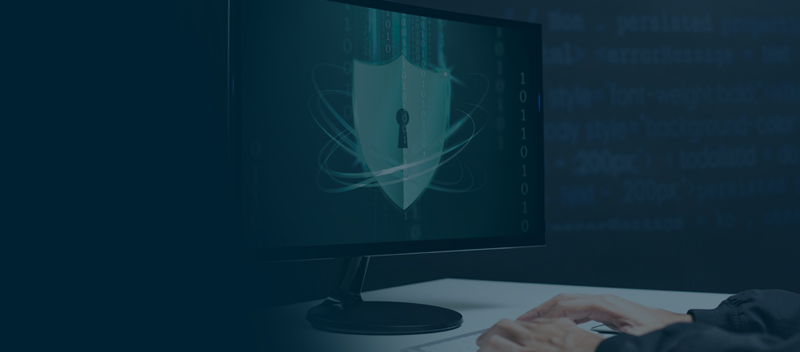
Human error accounts for 68% of security breaches in 2024, making it a primary vulnerability. From phishing scams to ransomware attacks, these threats often target employees, exploiting gaps in awareness and judgment. This is where cybersecurity awareness training becomes indispensable. By educating your workforce on recognizing and responding to cyber threats, you strengthen your first line of defense: your employees. With comprehensive employee security training programs, businesses can reduce incidents of phishing, social engineering, and mishandling of sensitive data. Why prioritize training now? Phishing schemes are more targeted and harder to detect. Regulatory frameworks like GDPR and HIPAA demand compliance. The rise of remote work increases exposure to vulnerabilities. TrustNet provides the expertise to address these challenges head-on. Combining simulation tools, proactive monitoring, and tailored training solutions, TrustNet equips organizations to prevent cyberattacks while embedding a culture of vigilance among employees. Why Cybersecurity Training Matters As we stated earlier, security breaches mostly result from human errors. Whether it’s a misplaced click on a phishing email or mishandling sensitive data, gaps in awareness can lead to catastrophic consequences. Effective training equips employees with the knowledge to spot and avoid threats like phishing schemes, malware, and social engineering attacks. A well-trained workforce significantly reduces the risk of falling victim to these exploits. Key Reasons to Prioritize Cybersecurity Training: — Phishing attack prevention Phishing remains one of the most common threats, with attackers crafting emails and websites that mimic legitimate sources. Teaching employees how to recognize red flags, such as unusual email sender addresses or urgent requests, is essential. — Addressing human error in cybersecurity Mistakes happen, but training can reduce their frequency. Simulations and guided workflows prepare employees to handle real-world scenarios with confidence. — Cybersecurity compliance Regulatory frameworks like GDPR and HIPAA mandate strict data protection protocols. Non-compliance can lead to hefty fines and reputational damage. Security training ensures employees understand and adhere to these requirements. The Benefits of Employee Cybersecurity Education: Reduces breach risks. Training empowers employees to act as a strong frontline against intrusions. Fosters a culture of security. Consistent awareness reinforces vigilance across teams. Protects your bottom line. Prevention is always more cost-effective than damage control. Organizations face an evolving threat landscape, and relying solely on technology is no longer enough. Comprehensive training not only shields businesses from external attacks but also lays the foundation for long-term resilience. For more info on our Security Awareness Training Platform, Click Here Key Components of Effective Training A robust cybersecurity training program is about building habits and skills that actively protect your organization. Here are the cybersecurity training best practices that every business leader, IT manager, HR professional, and compliance officer should consider: 1. Phishing Simulations to Test Employee Vigilance One of the biggest risks to companies is still phishing, and attackers are always improving their tactics. Phishing simulation tools should be included in training programs to assess staff members’ capacity to recognize and react to these schemes in a secure setting. Nowadays, AI-driven simulation tools are designed to closely resemble real-world phishing attempts. This approach sharpens employee awareness and provides insights into weak points that need reinforcement. 2. Password Hygiene and Multi-Factor Authentication Weak or compromised passwords are a major gateway for cyberattacks. Effective programs prioritize password security training, teaching employees how to create strong, unique passwords and maintain them securely. When paired with multi-factor authentication (MFA), businesses can add critical layers of protection. Training should explain how MFA works, requiring a second verification step, like a text code or biometric scan, and its role in protecting sensitive company assets. 3. Incident Reporting Workflows and Real-Time Threat Updates Even with the best preventive measures, mistakes and breaches happen. By educating staff members on incident reporting procedures, issues are discovered and resolved quickly, reducing adverse effects. Your program should also include real-time updates on emerging threats. Cybercriminals evolve quickly, so keeping your team informed about new tactics helps ensure they remain vigilant. TrustNet’s Approach to Cybersecurity Training Businesses require a customized strategy that considers their unique risks and challenges. TrustNet cybersecurity solutions are designed to do just that, empowering organizations with customized security training and building enterprise cyber resilience across industries. — Tailored Training for Diverse Industries One of TrustNet’s key strengths is its ability to adapt training modules for specific industries, such as healthcare, finance, and beyond. These industries have particular operational and regulatory challenges, so general training is inadequate. TrustNet meets these needs by implementing distinct data security procedures that guarantee compliance with industry norms while combating common threats. — Cutting-Edge Tools and Resources TrustNet goes beyond conventional training methods by integrating immersive tools and resources into its programs: Real-World Simulations: Employees engage with highly realistic simulations of phishing, smishing, and vishing attacks. With thousands of templates and patterns, these exercises prepare teams to handle the most convincing threats. User Training Materials: From videos and games to graphics and in-depth articles, TrustNet delivers engaging educational content for every type of learner. This variety helps reinforce learning across the organization. Compliance Dashboards: Organizations can track the success of their programs with security awareness metrics. These dashboards provide real-time insights into user progress and training ROI, supporting data-driven decision-making. — Building a Culture of Cybersecurity TrustNet’s approach fosters cybersecurity culture development through ongoing education and adaptable strategies. With monthly threat briefings, employees remain current with the latest risks, ensuring their vigilance evolves alongside emerging challenges. This continuous learning model reinforces a mindset where security becomes second nature. — Measurable Results and ROI TrustNet’s solutions are built to deliver results. Metrics such as reduced phishing click rates, improved password management practices, and enhanced compliance readiness showcase the tangible impact of security training for remote teams and in-office employees. Protect Your Business with TrustNet Modern cybersecurity challenges need strategic partnerships rather than reactive fixes. TrustNet provides the expertise and tools needed to turn your team into a vital line of defense, guaranteeing quantifiable results through tailored strategies. Key Benefits of Partnering with TrustNet Tailored Roadmaps: Gain actionable plans for long-term

